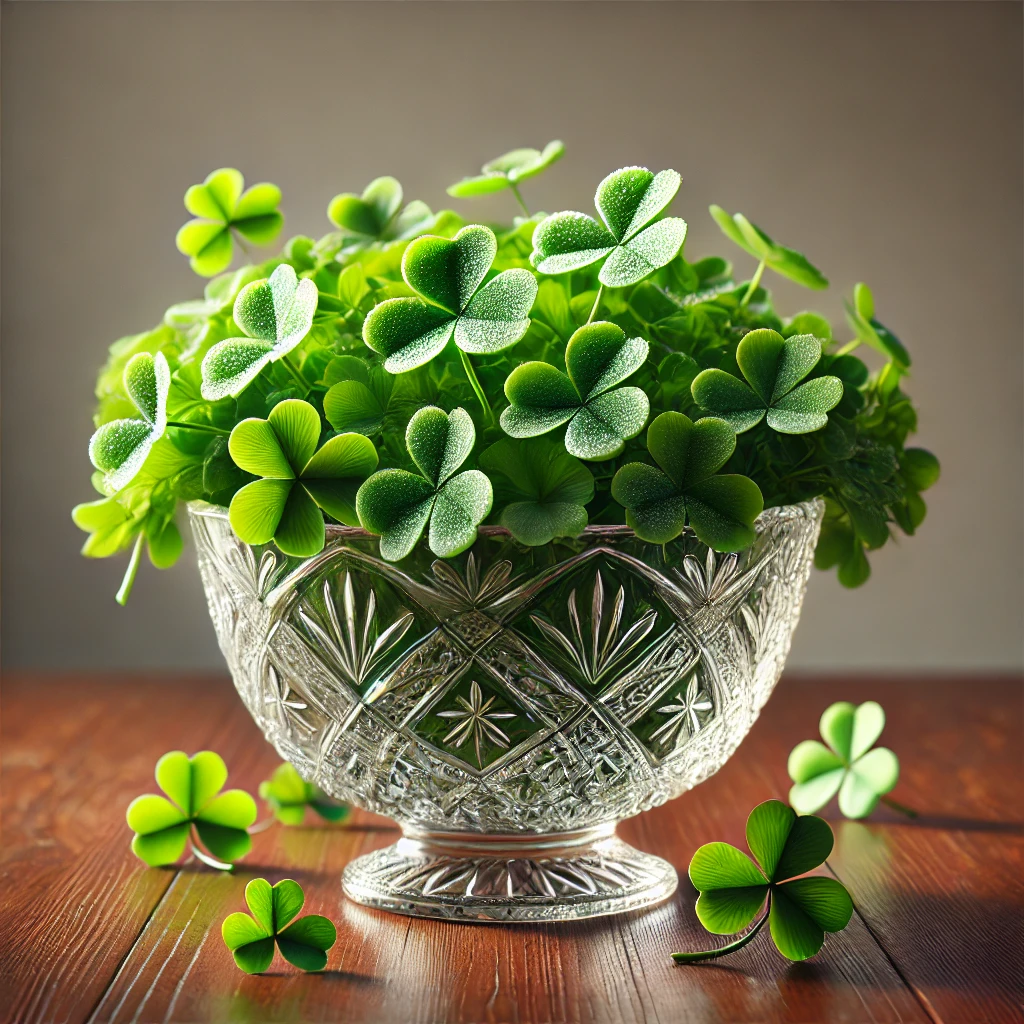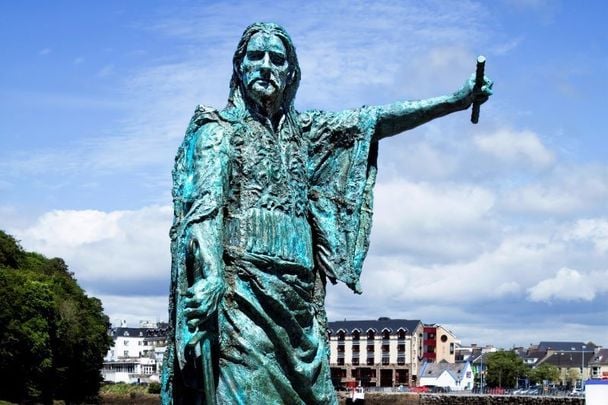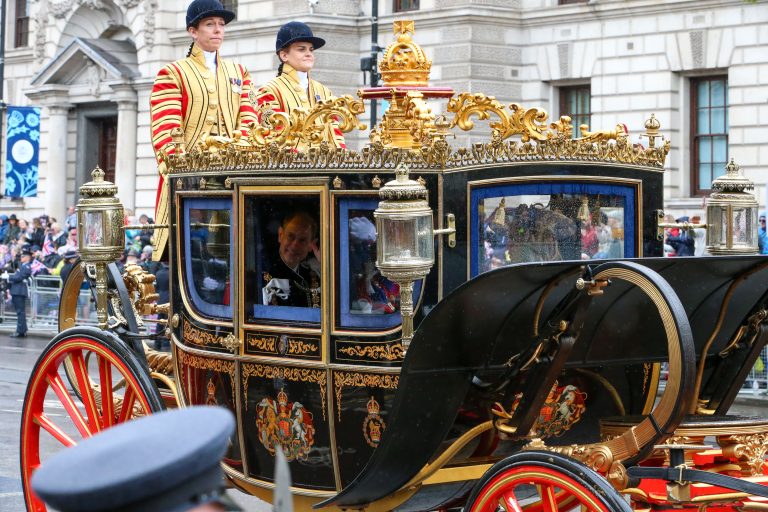
There’s a curious thing that happens every March—when the winds of winter still claw at the doors, but a flicker of spring begins to whisper beneath the frost. It is in that in-between moment, in the ceremonial chambers of power and pretense, that a fragile sprig of shamrock crosses the Atlantic Ocean—not merely a leaf, but a living talisman, handed from one nation to another. And in that gesture—fragile, symbolic, theatrical, yet oddly potent—lies the beating heart of a strange tradition known as the White House shamrock ceremony.
This is not just pomp and pageantry. This is myth meeting statecraft. This is history dressed in green.
From Pagan Pastures to Presidential Palms
Long before the polished corridors of Washington gleamed with political choreography, there were boglands, stone circles, and whispered lore in the hedgerows of Ireland. The shamrock—that humble, three-leafed sprout—grew wild beneath the hooves of cattle, nestled in the pockets of poets, and thrived in the stories of saints and seers.
What is the Story of St. Patrick and the Shamrock?
The story goes that St. Patrick, the man mythologized into a dragon-slayer of serpents and savior of souls, wandered the green hills of Éire armed not with sword or scripture, but with a sprig of clover. When trying to explain the holy trinity—the Father, Son, and Holy Spirit—to the pagan Irish, he is said to have plucked a shamrock and held it high.
Three leaves. One stem. Simple, sublime. Spiritual algebra explained by nature’s geometry.
Yet, beneath that tidy symbolism, there’s something wilder. The shamrock was long revered even before Patrick’s sermons—linked to rebirth, fertility, and sacred trios in pre-Christian Celtic lore. Patrick didn’t invent the power of the shamrock. He co-opted it. Rebranded it. Reclaimed it from the druids and made it holy in a different tongue.
The Legend of the Irish Shamrock
You see, the legend of the Irish shamrock is deeper than the catechism. It is the language of survival—of holding onto identity when the boots of empire trample the land. It is the symbol of a people who have suffered famine, exodus, colonialism, and war, yet still cling to a myth that grows in the mud.
From Rebels to Diplomats: How the Shamrock Found the White House
Fast forward to the 1950s—a time when Ireland, still finding its post-colonial footing, sought a way to assert its identity on the world stage. Enter Ambassador John Hearne, a man with enough wit and wisdom to know that sometimes diplomacy isn’t built in boardrooms, but in metaphor.
Thus, in 1952, the first formal presentation of a bowl of shamrock was made to President Harry S. Truman. A small gesture, perhaps, but it sparked a tradition—a way for the Irish Taoiseach (Prime Minister) to stand beside the President of the United States and say, “We are here. We remember. And we bring our myths with us.”
The White House Shamrock Ceremony: Ritual Meets Realpolitik
Over the years, the White House shamrock ceremony has evolved into a theatre of soft power. Taoisigh like Seán Lemass, Bertie Ahern, and Leo Varadkar have stood under the blinding lights of the White House press room, handing over a crystal bowl of shamrock—designed in the delicate, glinting artistry of Waterford crystal, no less.
It’s pageantry with political undertones. A moment where Irish-American ties are reaffirmed. Where immigration, trade, global peacekeeping, and even distant mutterings about neutrality and NATO swirl just behind the smile for the camera.
But at its core, it remains an ancient rite cloaked in diplomacy. A passing of leaves between leaders. A nod to a culture that bleeds poetry even when dressed in protocol.
What Does the Shamrock Symbolize?
Today, the shamrock symbolizes much more than religious doctrine. It is a symbol of Ireland itself. It’s about resilience, transformation, rebirth. It’s about rebellion wrapped in gentleness. It’s the quiet defiance of a people who know that power doesn’t always roar—it often grows silently, leaf by leaf, beneath the surface.
The Myth Behind Saint Patrick’s Day
Let’s strip the commercial gloss for a moment. Behind the rivers dyed green and drunken parades lies a potent truth. Saint Patrick’s Day is not about beer. It is about identity. It is the day when the Irish diaspora—displaced, scattered, but never dislocated—celebrates its heritage.
It is the myth of the exile returning home in spirit, even if the soil beneath their feet is American, Canadian, Australian, or beyond.
Why Is a Shamrock Called a Shamrock?
Etymologically, the word comes from the Irish “seamróg,” meaning young clover. But etymology never tells the whole story. The name itself carries softness, youth, rebirth—spring’s whisper in a frost-hardened field.
What Does “Drowning the Shamrock” Mean?
And then there’s the old tradition of “drowning the shamrock.” After a long day of celebration, a sprig of shamrock would be dropped into a final glass of whiskey or beer, which would be drunk in honor of Ireland. The soaked leaf would be tossed over the left shoulder for luck.
It’s a beautiful, raucous, slightly pagan ritual—a reminder that even symbols should be swallowed down with fire and laughter.
A Final Thought: More Than a Ceremony, a Statement
Every time a bowl of shamrock is passed from an Irish Taoiseach to an American President, it is more than a handshake. It is a whisper from the past, a defiant act of cultural continuity, a celebration of the stories that refuse to die.
It is a reminder that while empires fall and economies rise, it is myth, tradition, and memory that truly endure.
And in that fragile little leaf lies the soul of a people.






7 thoughts on “The History of the St. Patrick’s Day Shamrock Ceremony at the White House: A Bowl of Shamrock, a Tangle of Stories, and the Fire of Ireland’s Soul”
Comments are closed.